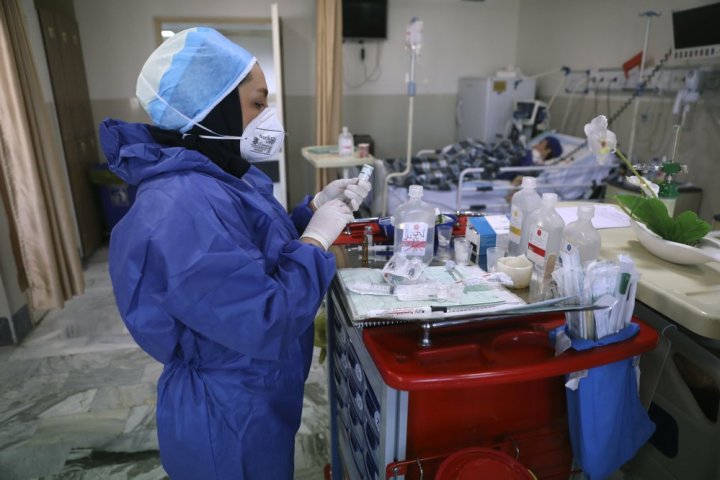[ad_1]

Months into Iran’s fight against the coronavirus, doctors and nurses at Tehran’s Shohadaye Tajrish Hospital still don a mask, a disposable hazmat suit and a double layer of latex gloves every day to attempt to contain a pandemic that shows no signs of slowing.
The hiss of high-flow oxygen to wheezing patients, the beeps of equipment monitoring vital signs and the crinkling rustle of passing medics have become a daily symphony here and in other hospitals across the Islamic Republic.
Iran reported its first coronavirus cases and deaths on the same day in February — the Middle East’s first and biggest outbreak of the virus — yet it only recently saw its highest single-day spike in reported cases, followed soon by the highest daily death toll in months.
The spikes, which came after a major Muslim holiday last month, have renewed fears about a potential second wave of infections sweeping across Iran. As businesses open and people begin to move around more after weeks of closures of most stores, offices and public spaces, health experts worry that growing complacency among the country’s 80 million people may further allow the virus to spread.
Health Minister Saeed Namaki said he realized the extent of the challenge when he took a domestic flight. “Many people have become careless, frustrated with wearing masks,” he said. “They did not observe (social) distancing in the flight’s seating and the airliner’s ventilation system was not working.”
Iran saw its highest single-day total of reported new cases — 3,500 — on June 5. The number dropped in the days afterward but remain in the low 2,000s a day, around twice the lows in the last week of April and the first week of May.
The daily death tolls in Iran also broke the 100 mark for the first time since mid-April on Sunday, Monday and Tuesday this week.
[ Sign up for our Health IQ newsletter for the latest coronavirus updates ]
The spike in cases occurred largely in Iran’s oil-rich southwestern Khuzestan province, as well as the western provinces of Kermanshah and Kurdistan. Officials link it to the Eid al-Fitr holiday that came in late May, during which families often travel to visit friends and relatives to mark the end of the Islamic holy month of Ramadan, when Muslims fast from dawn to dusk.
Ali Reza Zali, who is leading the campaign against the outbreak in Tehran, said last week that “some 60% of hospitalized patients traveled to other provinces before they became sick.”
Authorities also have reported concerns about Iran’s eastern Sistan and Baluchistan province bordering Pakistan.
The spike also reflects an increase in testing, Health Ministry official Ehsan Mostafavi said. Iran now has 130 labs across the country, running as many as 25,000 tests a day. Some 1.3 million tests have been conducted, up from 500,000 just a month ago.
[ad_2]
Source link
Dear readers, we really need your support to keep on serving you with authoritative, truthful, and juicy stories everyday. For your support, please reach out to the editor @gavelinternational66@gmail.com

